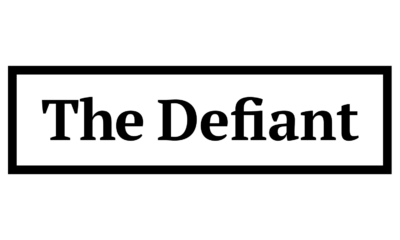News
The inevitable future of the global financial system is tokenization

Disclosure: The views and opinions expressed herein belong solely to the author and do not represent the views and opinions of crypto.news editorial.
Panelists Tim BaileyVice President of Global Business and Operations, Red Date Technology, William Quigleycryptocurrency and blockchain investor and co-founder of Wax and Tether, and I, Selva Ozellihad the honor of being invited to join the Eurasia Blockchain Summit with our roundtable on “the future of tokenization”.
Tim Bailey noted that while tokenization is still in its early stages, Red Date Technology is one of the co-architects of a new global digital infrastructure for digital payments and central bank digital currencies (CBDC). So far, 134 countries and monetary unions, representing 98% of global GDP, are exploring a CBDC that will symbolize the global financial and banking systems. Three countries have fully launched a CBDC: the Bahamas, Jamaica and Nigeria.
Central Bank Digital Currency Tracker | Source: Atlantic Council
Red Date Technology is the technical architect of various products, including a Blockchain-Based Services Network (BSN) and a Universal Digital Payments Network (UDPN), which is a global messaging network supporting digital currency systems government regulated involving regulated digital currencies, stablecoins. , and CBDCs. Tim Bailey said during the panel:
“Universal digital payments network (UDPN) has successfully launched an all-in-one digital currency sandbox that allows central and commercial banks to test and create innovative use cases with all forms of regulated digital currencies in a real-world environment. The UDPN all-in-one digital currency sandbox will help prepare financial institutions for the new digital financial world and create innovative new services based on insights from the UDPN team’s work over the past year with more than 25 global commercial banks, central banks and technology companies. I had the pleasure of participating in the “The Future of Tokenization” panel today with William Quigley and Selva Ozelli at the Eurasian Blockchain Conference in Cappadocia, Turkey. Thanks to Cenk, Nurdem and his team for welcoming us to this great event.
The UPDN team contributes to the overall effort deployed by various organizations, including the International Monetary FundTHE world BankCentral Bank of Switzerland, Monetary Authority of Singapore Project Guardianthe Bank for International Settlements Agora Project with a consortium of central banks and the Institute of International Finance (IIF) which guest the private financial sector to join its exploration of how tokenization can make wholesale cross-border payments work better, and the Basel Committee, the global standard-setter for banking regulation. The company works with public sector players as well as private financial sector partners such as HSBC, Standard Chartered and Deutsche Bank to test new forms of digital currency and digital asset technologies that will ultimately benefit the Mondial economy.
William Quigley explained that he realized the revolutionary potential of tokenization in 2014 when he co-founded the world’s first and most traded stablecoin Tether. Because tokenization specifically allows assets and their rights to be digitally represented using tokens on blockchains. He predicted that this could transform not only the trading of digital assets, including NFTs, but also any asset that can be represented digitally, such as stocks, bonds and other assets. A disruptor of the conventional financial system and a pioneer in the digital use of traditional currencies, he co-founded Tether tokens which are based on several blockchains.
William also predicted the immense utility and potential of NFTs in the global tokenization trend to unlock value and create new markets. With this vision, he built WAX.io in 2017—during a bull market in digital assets when the price of BTC increased from $1,000 to $20,000 at the end of the year. Like many projects in 2017, he initially built Wax.io on the Ethereum blockchain; However, the platform’s exorbitant gas fees, slowness, energy inefficiency, and inability to handle large transaction volume led it to develop the sustainable Wax blockchain and wallet specifically to meet gamers’ demands for blockchain and NFT collectors. William expects this, and Tim Bailey said he agrees that most of the growth in the NFT market in the future will be in utility NFTs, collectible NFTs, and web 3 game NFTs. Guillaume added:
“I think within 10 to 15 years the world will transition to using digital currencies and paper currencies will be a thing of the past.”
I agree with Tim and William that tokenization of the global financial system is the direction in which global financial markets are heading. What gives hope in this process is that global regulators collaborate in designing the legal framework for digital assets in the areas of taxation, money laundering and banking laws so that similar laws apply in all jurisdictions.
The Organization for Economic Co-operation and Development approved the Crypto-Asset Reporting Framework (CARF) in August 2022. This framework provides for the standardized reporting of tax information on crypto-asset transactions via CRS, with a view to automatic exchange of this information. So far, 48 countries have committed to implementing CARF.
The Financial Action Task Force (FATF) issued Money Laundering Standards on Virtual Assets and Virtual Asset Service Providers (VASP) in 2019. Chainalysis reported that self-reported FAFT surveys by 58 jurisdictions show:
- All jurisdictions (100%) have conducted or are conducting a risk assessment covering virtual assets and VASP transactions;
- Five jurisdictions (9%) have banned or are in the process of explicitly banning virtual assets and VASP transactions (China, Egypt, Saudi Arabia and in progress: Seychelles, Indonesia);
- Ten jurisdictions (17%) have not yet established a regulatory framework requiring VASPs to register or obtain a license and apply AML/CFT measures (Vietnam, New Zealand; in progress: Turkey, Argentina, Colombia; alongside the five jurisdictions above that have or are in the process of explicitly banning virtual assets and VASP transactions).
The Basel Committee, the global standard-setter for banking regulation, has pushed push back the implementation of the Basel rules on digital assets by one year, to January 2026.
In the United States, the bankruptcy of FTX was one of the largest financial frauds and a watershed moment, the repercussions of which included a collapse of the digital asset market, a crypto-banking crisis in 2023 with 5 bank failures regulatory backlash, and much more. bankruptcies. These adverse developments in the United States have triggered increased scrutiny and widespread calls for regulation of the digital assets industry, which is regulated by the United States Securities and Exchange Commission, the Commodity Futures Trading Commission, the Financial Crimes Enforcement Network and the Office of Foreign Assets Control. and the Internal Revenue Service (IRS).
Therefore, the digital asset industry is encouraging House leaders will support the Financial Innovation and Technology (FIT) for the 21st Century Act (HR 4763) to establish a U.S. regulatory regime for digital assets, which is expected to be voted on during of the last week of May by the United States House of Representatives. representatives.
(1) The bill suggests dividing digital asset oversight duties between the SEC and the CFTC. The bill also includes provisions for stablecoin regulation and whistleblower protection;
(2) The bill contains an anti-central bank digital currency bill (anti-CBDC bill) (HR 1122), which seeks to prohibit the Federal Reserve from issuing digital currency to consumers.
Additionally, the IRS recently released draft Form 1099-DA which will be used by digital asset brokers – which would include centralized exchanges, decentralized exchanges, wallet providers enabling trades and transfers, as well as Bitcoin ATMs – to report digital asset transactions annually next.
The data in the draft Form 1099-DA includes the date of acquisition of the digital assets, the cost basis of the said instruments, the date and time of the transaction in question, the proceeds of the sale, as well as the gross proceeds of all digital asset transactions. Essentially, the data for reporting digital asset transactions on proposed Form 1099-DA is similar to the data currently reported on Form 1099-B on proceeds from brokerage and barter transactions for stocks, commodities , regulated futures, foreign exchange contracts, forward contracts, debt instruments, options, securities futures, etc. It should be noted that earnings from digital asset collectible NFTs are taxed at a rate of 28%, which is higher than current capital gains rates.
News
Bitcoin soars above $63,000 as money flows into new US investment products

Bitcoin has surpassed the $63,000 mark for the first time since November 2021. (Chesnot via Getty Images)
Bitcoin has broken above the $63,000 (£49,745) mark for the first time since November 2021, when the digital asset hit its all-time high of over $68,000.
Over the past 24 hours, the value of the largest digital asset by market capitalization has increased by more than 8% to trade at $63,108, at the time of writing.
Learn more: Live Cryptocurrency Prices
The price appreciation was fueled by record inflows into several U.S.-based bitcoin cash exchange-traded funds (ETFs), which were approved in January this year.
A Bitcoin spot ETF is a financial product that investors believe will pave the way for an influx of traditional capital into the cryptocurrency market. Currently, indications are favorable, with fund managers such as BlackRock (BLK) and Franklin Templeton (BEN), after allocating a record $673 million into spot Bitcoin ETFs on Wednesday.
Learn more: Bitcoin’s Success With SEC Fuels Expectations for an Ether Spot ETF
The record allocation surpassed the funds’ first day of launch, when inflows totaled $655 million. BlackRock’s iShares Bitcoin Trust ETF (I BITE) alone attracted a record $612 million yesterday.
Bitcoin Price Prediction
Earlier this week, veteran investor Peter Brandt said that bitcoin could peak at $200,000 by September 2025. “With the push above the upper boundary of the 15-month channel, the target for the current market bull cycle, which is expected to end in August/September 2025, is raised from $120,000 to $200,000,” Brandt said. published on X.
The influx of capital from the traditional financial sphere into Bitcoin spot ETFs is acting as a major price catalyst for the digital asset, but it is not the only one. The consensus among analysts is that the upcoming “bitcoin halving” could continue to drive flows into the bitcoin market.
The Bitcoin halving is an event that occurs roughly every four years and is expected to happen again next April. The halving will reduce the bitcoin reward that miners receive for validating blocks on the blockchain from 6.25 BTC to 3.125 BTC. This could lead to a supply crunch for the digital asset, which could lead to price appreciation.
The story continues
Watch: Bitcoin ETFs set to attract funds from US pension plans, says Standard Chartered analyst | Future Focus
Download the Yahoo Finance app, available for Apple And Android.
News
FRA Strengthens Cryptocurrency Practice with New Director Thomas Hyun

Forensic Risk Alliance (FRA), an independent consultancy specializing in regulatory investigations, compliance and litigation, has welcomed U.S.-based cryptocurrency specialist Thomas Hyun as a director of the firm’s global cryptocurrency investigations and compliance practice. Hyun brings to the firm years of experience building and leading anti-money laundering (AML) compliance programs, including emerging payment technologies in the blockchain and digital asset ecosystem.
Hyun has nearly 15 years of experience as a compliance officer. Prior to joining FRA, he served as Director of AML and Blockchain Strategy at PayPal for four years. He established PayPal’s financial crime policy and control framework for its cryptocurrency-related products, including PayPal’s first consumer-facing cryptocurrency offering on PayPal and Venmo, as well as PayPal’s branded stablecoin.
At PayPal, Hyun oversaw the second-line AML program for the cryptocurrency business. His responsibilities included drafting financial crime policies supporting the cryptocurrency business, establishing governance and escalation processes for high-risk partners, providing credible challenge and oversight of front-line program areas, and reporting to the Board and associated authorized committees on program performance.
Prior to joining PayPal, Hyun served as Chief Compliance Officer and Bank Secrecy Officer (BSA) at Paxos, a global blockchain infrastructure company. At Paxos, he was responsible for implementing the compliance program, including anti-money laundering and sanctions, around the company’s digital asset exchange and its asset-backed tokens and stablecoins. He also supported the company’s regulatory engagement efforts, securing regulatory approvals, supporting regulatory reviews, and ensuring compliance with relevant digital asset requirements and guidelines.
Thomas brings additional experience in payments and financial crime compliance (FCC), having previously served as Vice President of Compliance at Mastercard, where he was responsible for compliance for its consumer products portfolio. He also spent more than seven years in EY’s forensics practice, working on various FCC investigations for U.S. and foreign financial institutions.
Hyun is a Certified Anti-Money Laundering Specialist (CAMS) and a Certified Fraud Examiner (CFE). He is a graduate of New York University’s Stern School of Business, where he earned a bachelor’s degree in finance and accounting. Additionally, he serves on the board of directors for the Central Ohio Association of Certified Anti-Money Laundering Specialists (ACAMS) chapter.
Commenting on his appointment, Hyun said, “With my experience overseeing and implementing effective compliance programs at various levels of maturity and growth, whether in a startup environment or large enterprises, I am excited to help our clients overcome similar obstacles and challenges to improve their financial crime compliance programs. I am excited to join FRA and leverage my experience to help clients navigate the complexities of AML compliance and financial crime prevention in this dynamic space.”
FRA Partner, Roy Pollittadded: “As the FRA’s sponsor partner for our growing Cryptocurrency Investigations and Compliance practice, I am thrilled to have Thomas join our ever-expanding team. The rapid evolution of blockchain and digital asset technologies presents both exciting opportunities and significant compliance challenges. Hiring Thomas in a leadership role underscores our commitment to staying at the forefront of the industry by enhancing our expertise in anti-money laundering and blockchain strategy.”
“Thomas’ extensive background in financial crime compliance and proven track record of building risk-based FCC programs in the blockchain and digital asset space will be invaluable as we continue to provide our clients with the highest level of service and innovative solutions.”
“FRA strengthens cryptocurrency practice with new director Thomas Hyun” was originally created and published by International Accounting Bulletina brand owned by GlobalData.
The information on this website has been included in good faith for general information purposes only. It is not intended to amount to advice on which you should rely, and we make no representations, warranties or assurances, express or implied, as to its accuracy or completeness. You must obtain professional or specialist advice before taking, or refraining from, any action on the basis of the content on our website.
News
Bitcoin trades around $57,000, crypto market drops 6% ahead of Fed decision

-
Bitcoin fell in line with the broader cryptocurrency market, with ether and other altcoins also falling.
-
Financial markets were weighed down by risk-off sentiment ahead of the Fed’s interest rate decision and press conference later in the day.
-
10x Research said it is targeting a price target of $52,000 to $55,000, anticipating further selling pressure.
Bitcoin {{BTC}} was trading around $57,700 during European morning trading on Wednesday after falling to its lowest level since late February, as the world’s largest cryptocurrency recorded its worst month since November 2022.
BTC has fallen about 6.3% over the past 24 hours, after breaking below the $60,000 support level late Tuesday, according to data from CoinDesk. The broader crypto market, as measured by the CoinDesk 20 Index (CD20), lost nearly 9% before recovering part of its decline.
Cryptocurrencies have been hurt by risk-off sentiment in broader financial markets amid stagflation in the United States, following indications of slowing growth and persistent inflation that have dampened hopes of an interest rate cut by the Federal Reserve. The Federal Open Market Committee is due to deliver its latest rate decision later in the day.
Ether {{ETH}} fell about 5%, dropping below $3,000, while dogecoin {{DOGE}} led the decline among other major altcoins with a 9% drop. Solana {{SOL}} and Avalanche {{AVAX}} both lost about 6%.
Bitcoin plunged in April, posting its first monthly loss since August. The 16% drop is the worst since November 2022, when cryptocurrency exchange FTX imploded, but some analysts are warning of further declines in the immediate future.
10x Research, a digital asset research firm, said it sees selling pressure toward the $52,000 level due to outflows from U.S. cash exchange-traded funds, which have totaled $540 million since the Bitcoin halving on April 20. It estimates that the average entry price for U.S. Bitcoin ETF holders is $57,300, so this could prove to be a key support level.
The closer the bitcoin spot price is to this average entry price, the greater the likelihood of a new ETF unwind, 10x CEO Markus Thielen wrote Wednesday.
“There may have been a lot of ‘TradeFi’ tourists in crypto – pushing longs all the way to the halving – that period is now over,” he wrote. “We expect more unwinding as the average Bitcoin ETF buyer will be underwater when Bitcoin trades below $57,300. This will likely push prices down to our target levels and cause a -25% to -29% correction from the $73,000 high – hence our $52,000/$55,000 price target over the past three weeks.”
The story continues
UPDATE (May 1, 8:56 UTC): Price updates throughout the process.
UPDATE (May 1, 9:57 UTC): Price updates throughout the process.
UPDATE (May 1, 11:05 UTC): Adds analysis from 10x.
News
The Cryptocurrency Industry Is Getting Back on Its Feet, for Better or Worse

Hello from Austin, where thousands of crypto enthusiasts braved storms and scorching heat to attend Consensus. The industry’s largest and longest-running conference, which can sometimes feel like a religious revival, offers opportunities to chat and listen to leading names in crypto. And for the casual observer, Consensus offers a useful glimpse into the mood of an industry prone to wild swings in fortune.
Unsurprisingly, the mood is noticeably more positive than it was a year ago, when crowds were sparse and many attendees were quietly confiding that they were considering switching to AI. In practice, that means some of the more obnoxious elements are back, but not to the level of Consensus 2018 in New York, when charlatans parked Lamborghinis outside the event and the hallways were lined with booth girls and scammers pitching “ICOs in a box.”
This time around, Elon Musk’s Cybertrucks have replaced Lamborghinis as the vehicle of choice for marketers. One of the most notable publicity stunts was a startup that paid a poor guy to parade around in the Texas sun in a Jamie Dimon costume, wig, and mask, and then staged a mock assault on him by memecoin characters.
Outside the event was a giant “RFK for President” truck, while campaign staffers manned a booth instead — a reflection of both the election year and crypto’s willingness to latch onto any candidate, no matter how outlandish, who will talk about the industry. RFK himself is scheduled to address the conference on Thursday.
Excesses aside, the general sense of optimism was understandable. The cryptocurrency market has not only recovered from the wave of fraud that nearly sank it in 2022, it is riding a new wave of political legitimacy. This month, cryptocurrencies scored once-unthinkable political victories in Washington, D.C., and there is a sense that the industry has not only withstood the relentless regulatory assaults of SEC Chairman Gary Gensler and Sen. Elizabeth Warren, but is poised to defeat them.
And while cryptocurrency is still searching for its flagship application, the optimists I spoke with pointed to signs that it is (once again) upon us. Those signs include the rapid advancement of zero-knowledge proofs as well as the popularity of Coinbase’s Base blockchain and, perhaps most importantly, the large-scale arrival of traditional finance into the world of cryptocurrencies – a development that not only provides a major financial boost, but also a new element of stability and maturity that will, perhaps, tame the worst of crypto’s wilder side. Finally, this consensus marked the end of the Austin era as the conference, under new leadership, will be held in Toronto and Hong Kong in 2025.
The story continues
Jeff John Roberts
jeff.roberts@fortune.com
@jeffjohnroberts
This story was originally featured on Fortune.com
-

 News12 months ago
News12 months agoBitcoin soars above $63,000 as money flows into new US investment products
-

 DeFi12 months ago
DeFi12 months agoEthena downplays danger of letting traders use USDe to back risky bets – DL News
-

 News12 months ago
News12 months agoFRA Strengthens Cryptocurrency Practice with New Director Thomas Hyun
-

 DeFi12 months ago
DeFi12 months agoZodialtd.com to revolutionize derivatives trading with WEB3 technology
-

 Markets12 months ago
Markets12 months agoBitcoin Fails to Recover from Dovish FOMC Meeting: Why?
-

 DeFi1 year ago
DeFi1 year ago👀 Lido prepares its response to the recovery boom
-

 Markets1 year ago
Markets1 year agoWhale Investments in Bitcoin Reached $100 Billion in 2024, Fueling Crazy Investor Optimism ⋆ ZyCrypto
-

 Markets1 year ago
Markets1 year agoWhy Bitcoin’s price of $100,000 could be closer than ever ⋆ ZyCrypto
-

 DeFi1 year ago
DeFi1 year agoPancakeSwap integrates Zyfi for transparent, gas-free DeFi
-

 Markets1 year ago
Markets1 year agoWhales are targeting these altcoins to make major gains during the bull market 🐋💸
-

 DeFi1 year ago
DeFi1 year ago🏴☠️ Pump.Fun operated by Insider Exploit
-

 News1 year ago
News1 year agoHow to make $1 million with crypto in just 1 year 💸📈





